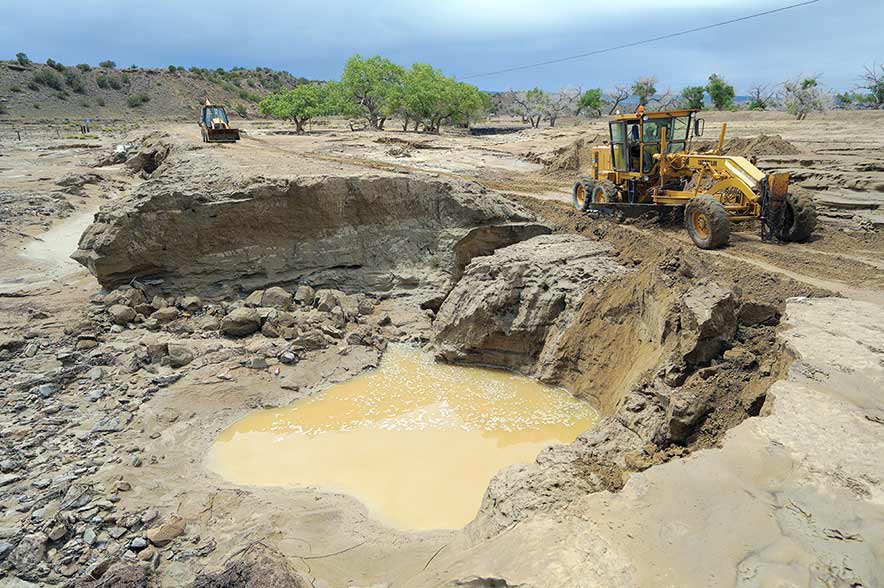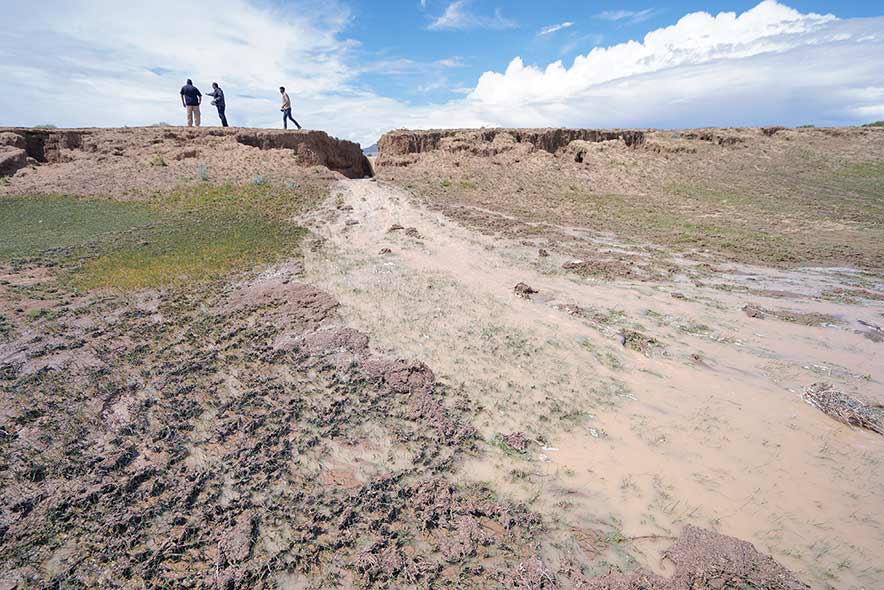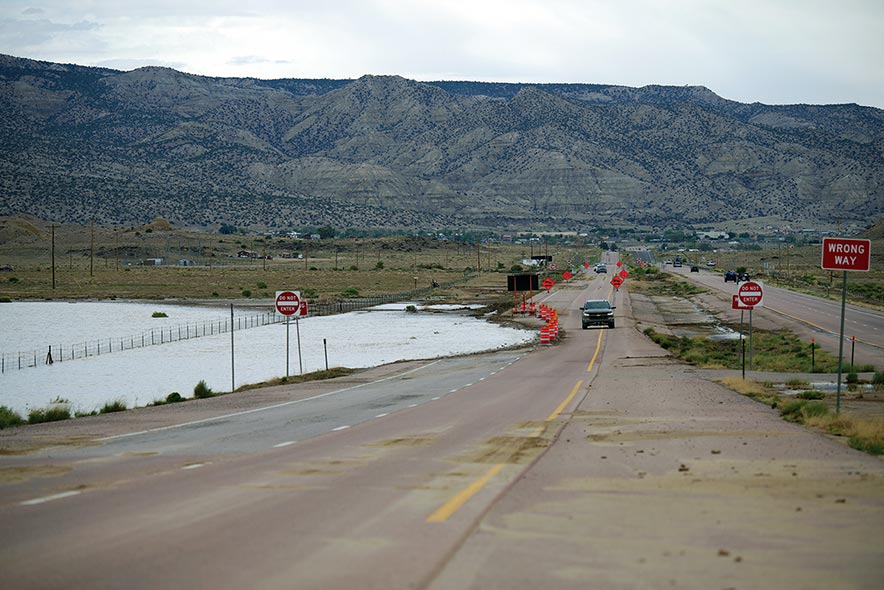
- Details
- By Donovan Quintero - Navajo Times
MEXICAN SPRINGS, N.M. - About 250 families became temporarily stranded after a three-hour rainfall washed out Navajo Service Route 30.
Two culverts, 6 feet in diameter, were washed away in a flash flood on Monday evening.
The dirt road connects to Mexican Springs and U.S. Highway 491 to the east and Navajo, New Mexico, and Asaayi Lake to the west.
Road crews from Mexican Springs Chapter and the BIA created a temporary path around the destroyed area.
Crews also pushed aside millions of pounds of mud off the road so vehicles, four-wheel included, wouldn’t get stuck.
Garrett Silversmith, Navajo Division of Transportation executive director, told Mexican Springs Chapter Secretary-Treasurer Carol Bowman-Musket culverts left over from the Tsaile road construction would be transported to Mexican Springs and used to repair the road.
Silversmith said the repair would be temporary.
Damaging downpour
About a mile north of the damaged road were two earthen dams containing large amounts of water that had been compromised from the downpour, said Bowman-Musket.
 Water begins a slow passage as President Jonathan Nez and his staff assess damage by flash floods on Tuesday in Mexican Springs, N.M. (Photo/Donovan Quintero)
Water begins a slow passage as President Jonathan Nez and his staff assess damage by flash floods on Tuesday in Mexican Springs, N.M. (Photo/Donovan Quintero)A steady amount of water flowed through the damaged area, and other areas showed heavy erosion.
Bowman-Musket said if one of the dams broke, it could jeopardize homes and wash out Route 30 again.
A third earthen dam on Navajo Route 9503 that connects Mexican Springs to U.S. Highway 491 was also damaged, with multiple areas breached.
On Tuesday the path of a flash flood could be seen and had moved toward some homes east of it. The road was impassable due to mud covering about 500 feet of it.
A resolution or letter to Rudy Shebala, Navajo Division of Natural Resources executive director, would speed up repair work.
A few miles northeast of Route 30, the torrential downpour partially settled on U.S. Highway 491, south of Tohatchi. The waters created a huge pond spanning dozens of acres. Road signs were placed along the highway warning drivers of the water on the road.
Silversmith said more than 15 communities in the Fort Defiance and Eastern agencies saw flash flooding since the monsoon began.
First rainfall
 A vehicle traveling southbound on U.S. Highway 491 drives by a flooded area on Tuesday south of Tohatchi, N.M. (Photo/Donovan Quintero)
A vehicle traveling southbound on U.S. Highway 491 drives by a flooded area on Tuesday south of Tohatchi, N.M. (Photo/Donovan Quintero)Kayenta Township reported the area was receiving rainfall for the first time this year, but as quickly as it came was already moving north.
Hard Rock Chapter reported areas to the east toward Piñon received rain, making the dirt roads impassable at times.
Tuba City Chapter reported the area had gotten more wind than rain.
Torreon Chapter reported it had been raining for two weeks and had caused some damage to dirt roads. The chapter didn’t report damages or injuries.
“This is the first rain that we got, but we don’t need this fast,” Bowman-Musket said. “If it would just come down nice and slow for a few hours a day, that would be nice.”
The monsoon rains have awakened frogs that could be heard chirping their love songs in the earthen dam in Mexican Springs.
The Navajo Nation continues to experience a mega drought lasting more than 20 years. Currently, the reservation is experiencing moderate to severe drought.
The National Weather Service forecasts rising temperatures and windy conditions across the region.
“We badly need the rains out here,” Bowman-Musket said.
Help us defend tribal sovereignty.
At Native News Online, our mission is rooted in telling the stories that strengthen sovereignty and uplift Indigenous voices — not just at year’s end, but every single day.
Because of your generosity last year, we were able to keep our reporters on the ground in tribal communities, at national gatherings and in the halls of Congress — covering the issues that matter most to Indian Country: sovereignty, culture, education, health and economic opportunity.
That support sustained us through a tough year in 2025. Now, as we look to the year ahead, we need your help right now to ensure warrior journalism remains strong — reporting that defends tribal sovereignty, amplifies Native truth, and holds power accountable.
 The stakes couldn't be higher. Your support keeps Native voices heard, Native stories told and Native sovereignty defended.
The stakes couldn't be higher. Your support keeps Native voices heard, Native stories told and Native sovereignty defended.
Stand with Warrior Journalism today.
Levi Rickert (Potawatomi), Editor & Publisher
